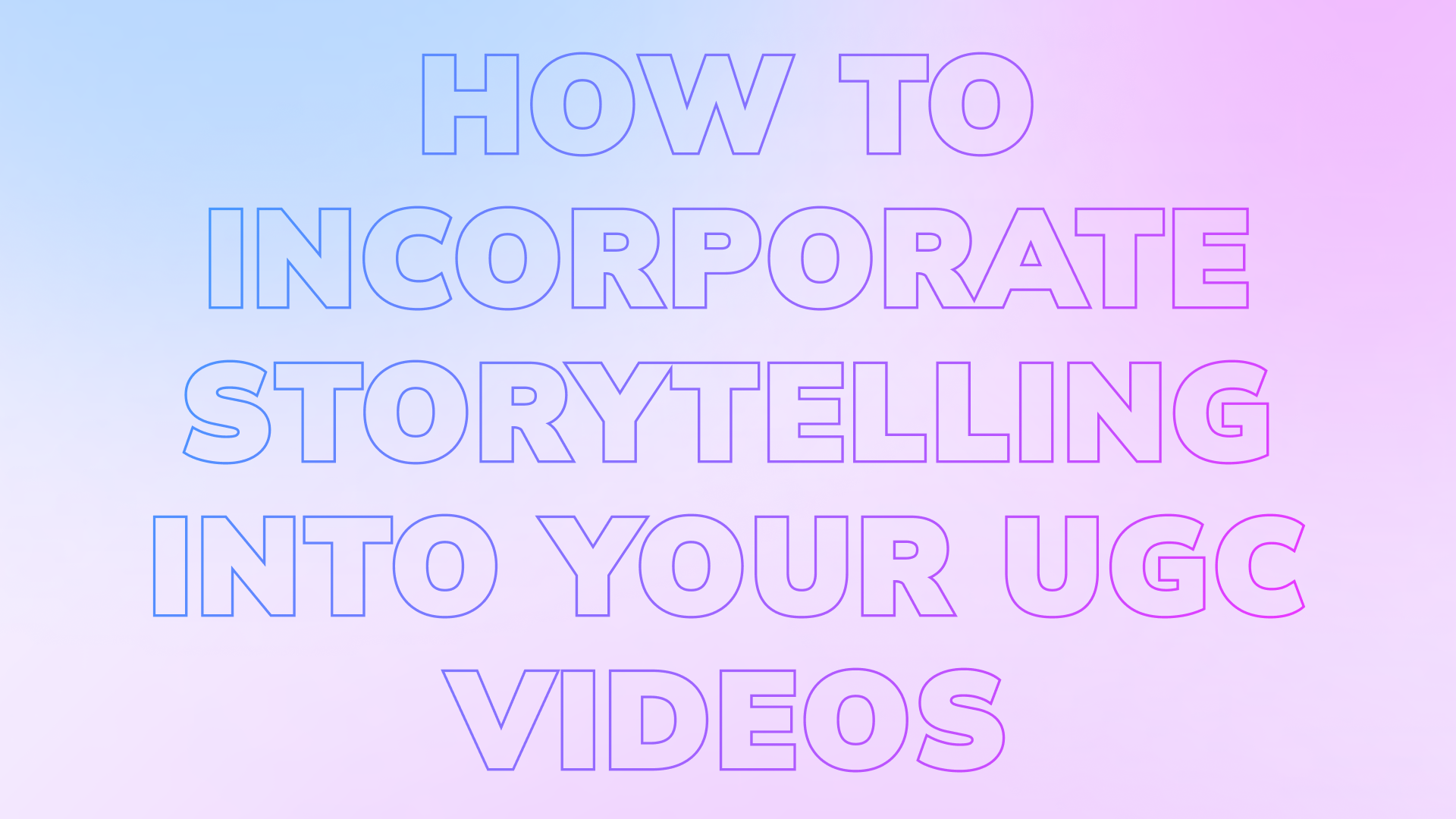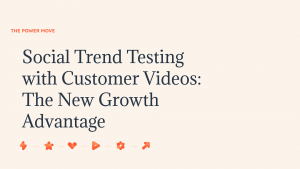The most successful User-Generated Content (UGC) videos aren’t just random clips — they’re powerful, authentic stories that people believe. In an age where audiences scroll past traditional ads without a second thought, it’s the real, emotional moments that make them pause. A traveler capturing their first glimpse of a destination. A customer’s honest reaction to a new product. A small win that feels big to someone real. These stories create emotional resonance that traditional marketing can’t replicate.
UGC storytelling turns everyday users into relatable narrators. When a real person shares their journey — the struggles, surprises, and transformations — viewers see themselves reflected in those experiences. That’s what builds trust. That’s what drives action. Storytelling transforms videos from short-lived content into memorable brand moments that people connect with and share.
Some key insights show just how powerful this approach can be:
• Story-driven videos have 22× higher recall than fact-based ads
• UGC videos generate up to 4× longer watch times than polished brand spots
• Emotional UGC builds trust and drives conversions
The future of content marketing lies not in perfect visuals but in meaningful narratives. Today’s audiences crave authenticity, not polish — and that’s why storytelling has become central to modern UGC trends. In this guide, we’ll explore how to weave storytelling into your UGC videos — from emotional structure and character arcs to platform-specific strategies that make your brand’s voice feel real and relatable.
💡 Why Storytelling Makes UGC Videos So Powerful
Stories are the language of human connection. People process stories faster and remember them longer than facts or visuals alone. This is why story-driven UGC outperforms product-centric content — it connects emotionally first, then persuades logically.
When users tell authentic stories, they give your brand a heartbeat. These stories invite audiences to feel something: excitement, curiosity, hope, or gratitude. They remind viewers that behind every brand is a community of people with real experiences and emotions.
Key ideas to remember:
• Storytelling equals connection
• Connection equals trust
• Trust equals conversion
A good UGC story builds loyalty because it doesn’t feel like marketing — it feels like life. It’s honest, imperfect, and deeply human.
🎥 UGC Storytelling – A Step-by-Step Framework
The most engaging UGC videos follow a natural narrative arc. Whether it’s a 15-second TikTok or a 30-second Instagram Reel, every great story includes a hook, a conflict, and a resolution — all told in an authentic voice. A strong UGC strategy builds on this structure, ensuring that each creator’s story not only feels genuine but also aligns with your brand’s message and goals. The result? Content that connects emotionally while driving measurable impact.
Step 1: Start with a Relatable Hook
The first few seconds matter the most. Use emotion, surprise, or curiosity to grab attention immediately. Start with a moment that makes people stop scrolling — those opening seconds can define whether your story gets watched or skipped. Effective UGC hooks often sound like authentic reactions or unexpected discoveries, such as “I never thought this product would actually work” or “Here’s what happened when I tried it for the first time.” These human moments invite curiosity and set the stage for genuine storytelling.
Step 2: Build Tension or Curiosity
Every good story has a question or moment of suspense. Maybe it’s a challenge, an unexpected reaction, or a small obstacle. Use quick cuts, transitions, or on-screen text to create anticipation. The goal is to keep the viewer wondering what happens next.
Step 3: Show the Transformation or Emotion
This is where you reveal the payoff. Show the before and after, the product experience, or the emotional reaction. It doesn’t need to be perfect — it needs to be real. Viewers relate more to authenticity than to flawless production.
Step 4: End with a Human Touch
Close with personality. A laugh, a thank you, or a question like “Would you try this?” gives viewers a reason to engage. Add light calls-to-action that feel conversational, not commercial.
Tips for all steps:
• Keep videos under 30 seconds
• Focus on storytelling over selling
• Let real voices and emotions shine
Storytelling isn’t about scripting; it’s about guiding the story so it feels natural and memorable.
Examples of Storytelling in User-Generated Video Content
Some of the most impactful UGC campaigns use storytelling as their backbone.
Airbnb showcases guest stories about their travel “firsts,” from a couple’s first trip abroad to a family’s first home rental. These videos highlight human emotion over destination marketing.
Nike encourages its community to share personal milestones through challenges and movement stories. Each clip celebrates individual perseverance and the feeling of belonging to something bigger.
Skincare brands often feature customers documenting their transformation journeys, emphasizing personal growth and self-confidence rather than just the product itself.
Best practices to keep stories meaningful:
• Keep every submission authentic — no scripts
• Encourage variety in voices, perspectives, and tone
• Focus on the customer’s “why,” not just the product’s “what”
Brands that embrace real stories earn loyalty through emotion, not ads.
UGC Video Strategy – Making Storytelling Scalable
Storytelling can be systemized without losing authenticity. The key is to create frameworks that invite real people to share their experiences in their own words.
Encourage participation through hashtag challenges that spark personal stories. Create branded prompts like “Show us your first try,” “Your best day using X,” or “What changed after you tried it.” These kinds of campaigns generate hundreds of clips that each tell a micro-story aligned with your brand values.
AI tools can also help identify emotional peaks in UGC submissions — those moments of laughter, surprise, or gratitude — so brands can curate the most compelling stories efficiently.
Best practices for scalability:
• Curate stories instead of controlling them
• Reward genuine participation, not polish
• Repurpose story clips across both paid and organic campaigns
When storytelling becomes the foundation of your UGC strategy, every customer video becomes part of your brand’s legacy.
Conclusion
Storytelling transforms UGC from casual clips into emotional, connection-driven marketing assets. It’s what turns a product demo into a personal moment and a customer reaction into a brand anthem.
In every story, there’s truth — and in every truth, there’s power. By prioritizing emotion, honesty, and human perspective over production perfection, brands can create lasting impact.
Don’t chase perfect shots — tell real stories. Because in 2025, authenticity isn’t optional; it’s your competitive edge.




